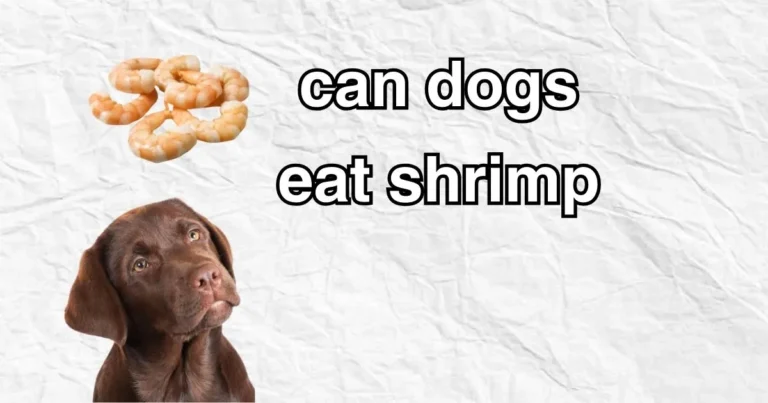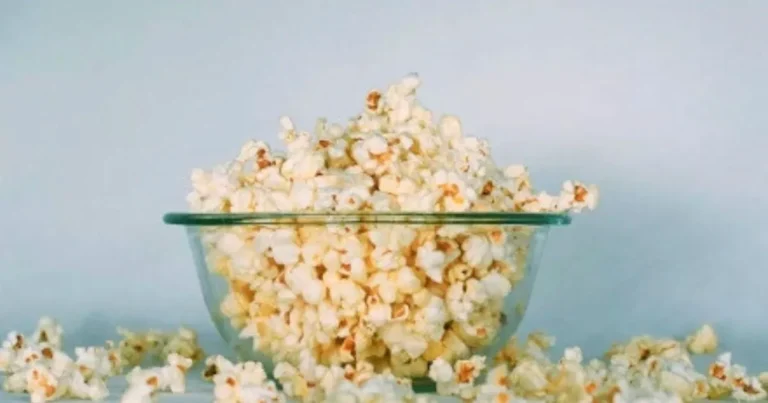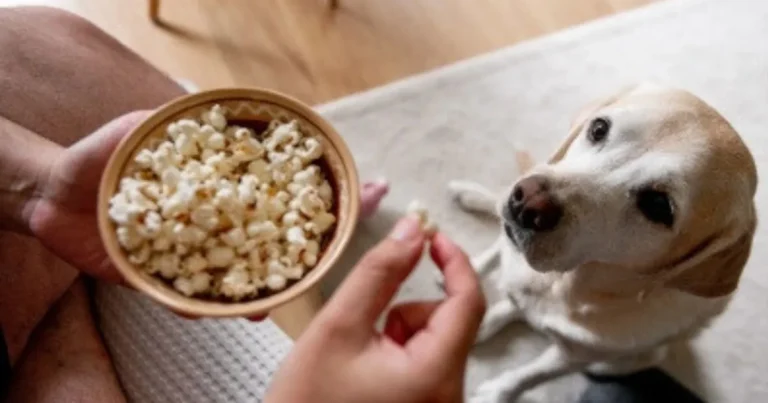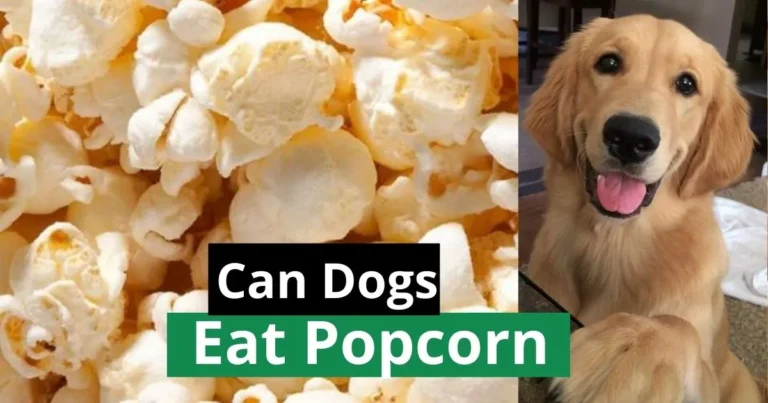Dogs and Popcorn: A Complete Guide to Safety & Nutrition
Table of Contents
As a dog owner, you’ve probably seen your furry friend eyeing your movie night snack. The bond between dogs and popcorn can be both fun and puzzling. Every pet parent wants to share tasty treats safely, but it’s not always easy.
Popcorn can be a great treat for your four-legged friend if done right. Dogs love popcorn, but not all kinds are safe. Knowing the right kind of popcorn for dogs is key for their health and happiness.
This guide will cover everything you need to know about giving popcorn to your dog. We’ll look at the good and bad sides of popcorn for dogs. You’ll learn how to make popcorn a safe and fun snack for your dog.
Whether you’re new to pet ownership or have been a dog parent for years, you’ll find valuable tips. You’ll learn how to make delicious, safe popcorn treats for your dog. Your furry friend will surely be excited.
Understanding the Basics of Dogs and Popcorn
Exploring the relationship between dogs and popcorn requires careful consideration of safety and nutrition. Pet owners often wonder about sharing this popular snack with their furry companions. When prepared correctly, popcorn can be a safe occasional treat for dogs.
What Makes Popcorn Safe for Dogs
Plain, air-popped popcorn is the safest option for dogs. The key factors that determine popcorn safety include:
- No added salt or butter
- Fully popped kernels
- Small serving sizes
- Absence of artificial flavors
Nutritional Components of Plain Popcorn
Understanding how to safely feed popcorn to dogs starts with recognizing its nutritional profile. Plain popcorn offers some potential benefits:
- Low-calorie snack
- Contains trace minerals
- Provides minimal dietary fiber
- Relatively low in fat
The Role of Processing Methods
Different processing methods dramatically impact popcorn’s safety for canine consumption. Air-popping is the best method for dogs and popcorn interactions. Microwave or oil-popped varieties introduce unnecessary risks and potential health complications.
“Always choose plain, air-popped popcorn for your dog’s occasional treat.” – Veterinary Nutrition Experts
When considering dogs and popcorn as a snack, moderation is key. Small amounts of plain popcorn can be a fun occasional treat. But, it should never replace balanced dog nutrition.
Health Benefits of Plain Popcorn for Canines
Plain popcorn is a surprising healthy snack for dogs. It’s light and crunchy, offering benefits when given in small amounts.
Popcorn is more than just a snack for dogs. It has nutrients that help their health:
- B vitamins including riboflavin and thiamine
- Natural fiber for digestive support
- Low-calorie content
- Trace minerals like magnesium and zinc
Dogs get these benefits from air-popped kernels without salt, butter, or seasonings. These vitamins help with energy, digestion, vision, and nerves.
- Energy production
- Digestive system function
- Vision health
- Nerve system maintenance
Popcorn is not a full meal but a healthy snack now and then. Make sure to remove any unpopped kernels to avoid choking. Serve it in small amounts.
Every dog is unique. Talk to your vet before adding new treats to your dog’s diet. This ensures they fit your dog’s health needs.
Potential Risks and Dangers to Watch For
When you introduce dogs and popcorn, it’s important to know the risks. Not all popcorn is safe for dogs. Knowing the dangers can help avoid serious health problems.
Feeding popcorn to dogs needs careful thought and watching closely. Some parts of this snack can be bad for your dog’s health and safety.
Choking Hazards from Kernels
Unpopped and partially popped kernels are big risks. These hard kernels can:
- Get stuck in your dog’s throat
- Damage your dog’s teeth
- Make it hard for your dog to breathe
- Lead to choking incidents
Digestive Issues and Concerns
Dogs might have trouble digesting popcorn. They could face:
| Digestive Concern | Potential Symptoms |
|---|---|
| Upset Stomach | Vomiting, diarrhea |
| Intestinal Blockage | Constipation, abdominal pain |
| Allergic Reaction | Skin irritation, itching |
Signs of Popcorn Intolerance
Knowing how to safely give popcorn to dogs means watching for intolerance signs. Look out for these signs:
- Excessive gas or bloating
- Sudden changes in appetite
- Unusual lethargy
- Persistent gastrointestinal discomfort
Always talk to your vet before adding new foods to your dog’s diet. This is especially true for dogs and popcorn as a treat.
Safe Serving Sizes Based on Dog Weight
Feeding popcorn to dogs safely means knowing the right amount. Popcorn can be a great snack for dogs if given in small amounts. The size of your dog is key to figuring out how much popcorn they can have.
Vets say treats should not make up more than 10% of a dog’s daily calories. This rule also applies to popcorn. It’s important to give small amounts and not too often.
| Dog Weight | Maximum Popcorn Serving |
|---|---|
| Small Dogs (under 20 lbs) | 5-10 plain popped kernels |
| Medium Dogs (20-50 lbs) | 10-15 plain popped kernels |
| Large Dogs (50-90 lbs) | 15-20 plain popped kernels |
Here’s how to introduce popcorn as a treat:
- Start with very small amounts
- Choose plain, air-popped popcorn without seasonings
- Watch for any allergic reactions or digestive issues
- Remove unpopped kernels to prevent choking
Remember, every dog is unique. Always consult with your veterinarian before adding new treats to your dog’s diet.
Harmful Popcorn Varieties to Avoid
Not all popcorn is safe for dogs. Some types can be very harmful. It’s important for pet owners to know this before giving popcorn to their dogs.
It’s crucial to know which popcorn can harm your dog. Some popcorn can upset your dog’s stomach and cause nutritional problems.
Buttered and Salted Popcorn Risks
Buttered and salted popcorn can be dangerous for dogs:
- High fat content can lead to pancreatitis
- Excessive salt causes sodium ion poisoning
- Potential weight gain and obesity
Flavored Popcorn Dangers
Flavored popcorn can be even more risky:
- Artificial sweeteners like xylitol are toxic to dogs
- Chocolate or caramel coatings can be extremely dangerous
- Artificial flavors may contain harmful chemicals
Microwave Popcorn Considerations
Microwave popcorn bags have extra risks:
- Chemical coatings inside the bag
- Potential for unpopped kernels
- Added preservatives and artificial ingredients
“When in doubt, stick to plain, air-popped popcorn without any additives,” veterinary nutritionists recommend.
Always talk to your vet before giving your dog new foods. This ensures your dog stays safe and healthy.
How to Prepare Dog-Safe Popcorn at Home
Learning how to safely feed popcorn to dogs requires careful preparation and attention to detail. Air-popped popcorn can be a delightful occasional treat for your furry friend when prepared correctly.
To create homemade dog treats with popcorn, follow these essential steps:
- Choose plain, organic popcorn kernels without additives
- Use an air popper or stovetop method for cooking
- Avoid using oil, butter, salt, or seasonings
- Ensure all kernels are fully popped to prevent choking
When preparing popcorn for dogs, temperature and cooling are crucial. Allow the popcorn to cool completely before offering it to your pet. Check for any unpopped or partially popped kernels, which can pose a significant choking hazard.
Store any leftover popcorn in an airtight container to maintain freshness. Remember that popcorn should only be an occasional treat, not a regular part of your dog’s diet. Small dogs should receive fewer pieces compared to larger breeds.
Pro tip: Always introduce new treats gradually and watch for any adverse reactions.
When you want to safely feed popcorn to dogs, moderation is key. A few pieces as an occasional snack can be enjoyable for your canine companion without causing nutritional imbalances.
Incorporating Popcorn into Homemade Dog Treats
Making homemade dog treats with popcorn is a fun way to reward your pet. Popcorn is a great snack for dogs because it’s crunchy and nutritious. Just make sure to prepare it right.
When making popcorn treats, choose your ingredients carefully. You want to make sure they’re safe and tasty for your dog.
Simple Popcorn Treat Recipes
Here are some tasty popcorn treats your dog will enjoy:
- Popcorn Balls: Mix plain popped corn with unsweetened applesauce to create bite-sized treats
- Popcorn Biscuits: Incorporate ground popcorn into dog-friendly biscuit dough
- Crunchy Popcorn Clusters: Combine popcorn with mashed sweet potato for added nutrition
Mixing with Dog-Friendly Ingredients
When using popcorn in dog treats, add these healthy ingredients:
| Ingredient | Nutritional Benefit |
|---|---|
| Peanut Butter (Xylitol-free) | Protein and healthy fats |
| Pumpkin Puree | Fiber and digestive support |
| Lean Chicken | High-quality protein |
Always use plain, air-popped popcorn without salt, butter, or seasoning. These treats are a special snack that’s good for your dog’s health.
Signs Your Dog May Have Eaten Too Much Popcorn
It’s important to know the signs if your dog eats too much popcorn. Learning how to safely give popcorn to dogs means knowing when it’s too much.
Dogs can show several signs if they eat too much popcorn. Look out for these signs that might mean your dog is not feeling well:
- Vomiting or repeated retching
- Unusual lethargy or weakness
- Visible abdominal discomfort
- Changes in bowel movements
- Reduced appetite
There are serious symptoms that need vet help right away. These include:
- Persistent diarrhea lasting more than 24 hours
- Signs of potential intestinal blockage
- Excessive drooling
- Difficulty breathing
If you see any of these signs after your dog eats popcorn, call your vet fast. Keeping an eye on how your pet reacts to new foods is key to their health.
Prevention is always better than treatment. Knowing the right amount and how to prepare popcorn can help avoid these problems when sharing it with your dog.
Alternative Healthy Snacks to Popcorn
Looking for the best snacks for dogs means finding nutritious options. These snacks should support your dog’s health and give them important nutrients.
Exploring popular dog-friendly snacks can make treat time more exciting. Here are some great choices:
- Carrots: Low-calorie, crunchy, and full of vitamins
- Blueberries: Full of antioxidants and low in calories
- Cucumber slices: Hydrating and low in fat
- Apple chunks: A sweet treat with fiber (remove seeds)
For those looking for structured nutrition, here’s a detailed list of alternatives:
| Snack | Nutritional Benefits | Serving Size |
|---|---|---|
| Sweet Potato | High in vitamins A and C | 1-2 small cubes |
| Pumpkin | Supports digestive health | 1 tablespoon |
| Lean Chicken | Protein-rich | Small pieces |
Always introduce new snacks slowly and in small amounts. Talk to your vet to make sure these snacks are right for your dog’s diet and health.
Conclusion
Feeding popcorn to dogs needs careful thought and knowledge. Dogs and popcorn can be a fun treat sometimes. But, it’s important to think about your dog’s health and what they need to eat.
Plain, air-popped popcorn is the safest choice for dogs. It should not have salt, butter, or seasonings. This makes it a good snack for them.
Your dog’s size, weight, and health are key to knowing how much popcorn they can have. Always talk to a vet before giving new treats to your dog. Watch them closely for any signs of trouble or choking.
Being a good pet owner means knowing treats like popcorn are just that. They should not replace their regular meals. By being careful and not overdoing it, popcorn can be a fun treat for your dog.
Every dog is different. What’s good for one might not be for another. Keep up with vet visits and watch your dog closely. This way, you can safely add popcorn to their diet.






